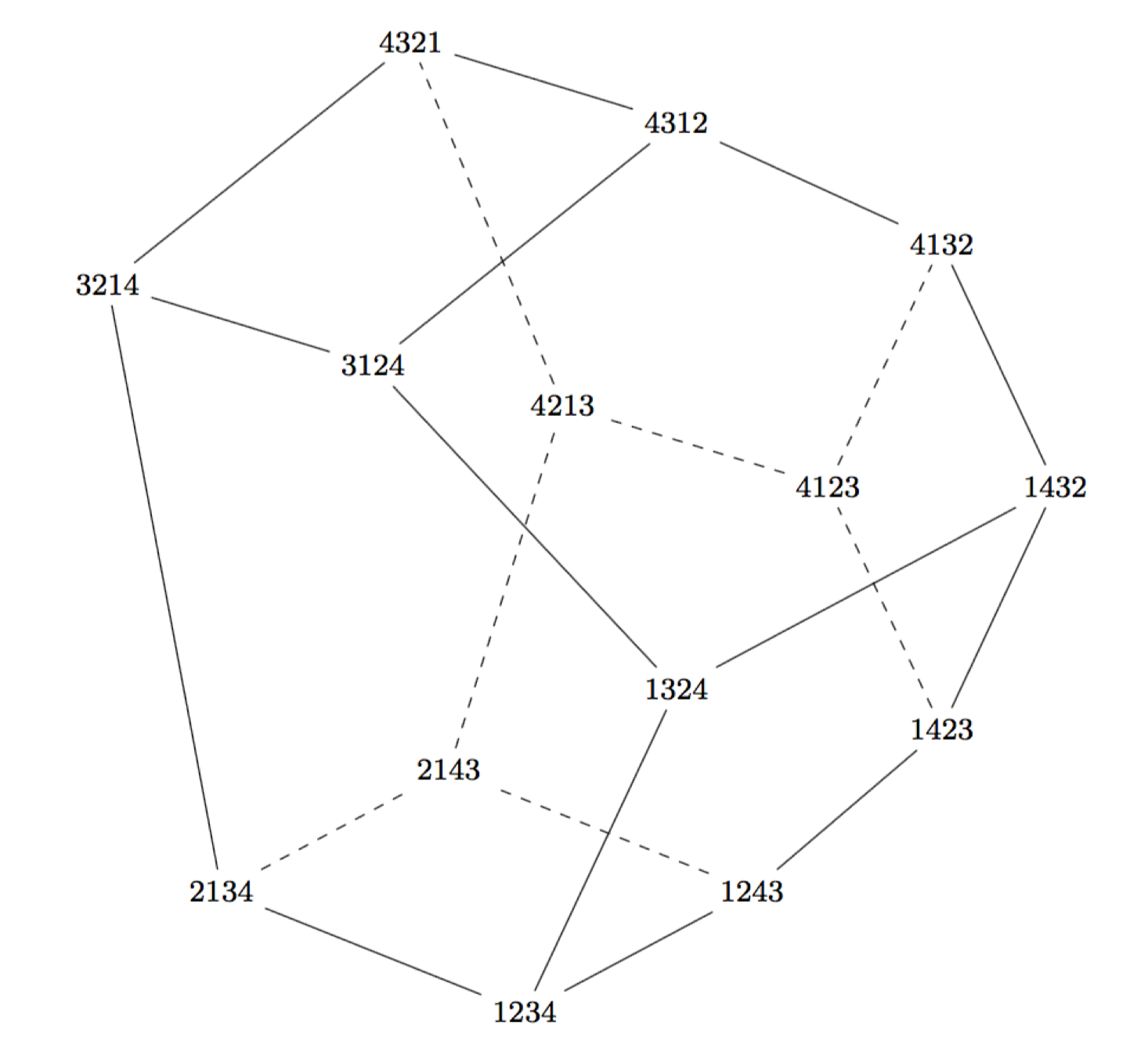Combinatorics
Welcome
Welcome to the course web page for the Spring 2021 manifestation of MAT 526: Topics in Combinatorics at Northern Arizona University.
Course Info
Title: MAT 526: Topics in CombinatoricsSemester: Spring 2021
Credits: 3
Section: 1
Time: 9:10-10:00AM MWF
Location: AMB 207
Instructor Info
Dana C. Ernst, PhDAMB 176
MWF 1:30-2:30PM, T 1:00-2:00PM via Zoom
dana.ernst@nau.edu
928.523.6852
danaernst.com
The mathematician does not study pure mathematics because it is useful; he studies it because he delights in it, and he delights in it because it is beautiful.
What is This Course All About?
This course focuses on enumerative combinatorics with an introduction to generating function techniques. The tentative plan is to cover Chapters 1-6 and 11 of Eulerian Numbers by T. Kyle Petersen (DePaul University), but we may cover more or less depending on time and interests. Here are the proposed topics:
- Eulerian numbers
- Binomial coefficients
- Generating functions
- Classical Eulerian numbers
- Eulerian polynomials
- Two important identities
- Exponential generating function
- Narayana numbers
- Catalan numbers
- Pattern-avoiding permutations
- Narayana numbers
- Dyck paths
- Planar binary trees
- Noncrossing partitions
- Partially ordered sets
- Basic definitions and terminology
- Labeled posets and P-partitions
- The shard intersection order
- The lattice of noncrossing partitions
- Absolute order and Noncrossing partitions
- Weak order, hyperplane arrangements, and the Tamari lattice
- Inversions
- The weak order
- The braid arrangement
- Euclidean hyperplane arrangements
- Products of faces and the weak order on chambers
- Set compositions
- The Tamari lattice
- Rooted planar trees and faces of the associahedron
- Refined enumeration
- The idea of a $q$-analogue
- Lattice paths by area
- Lattice paths by major index
- Euler-Mahonian distributions
- Descents and major index
- $q$-Catalan numbers
- $q$-Narayana numbers
- Dyck paths by area

Don’t fear failure. Not failure, but low aim, is the crime. In great attempts it is glorious even to fail.
Dana C. Ernst
Mathematics & Teaching
Northern Arizona University
Flagstaff, AZ
Website
928.523.6852
BlueSky
Instagram
Facebook
Strava
GitHub
arXiv
ResearchGate
LinkedIn
Mendeley
Google Scholar
Impact Story
ORCID
Buy me a coffee
About This Site
This website was created using GitHub Pages and Jekyll together with Twitter Bootstrap.
Unless stated otherwise, content on this site is licensed under a Creative Commons Attribution-Share Alike 4.0 International License.
The views expressed on this site are my own and are not necessarily shared by my employer Northern Arizona University.
The source code is on GitHub.
Land Acknowledgement
Flagstaff and NAU sit at the base of the San Francisco Peaks, on homelands sacred to Native Americans throughout the region. The Peaks, which includes Humphreys Peak (12,633 feet), the highest point in Arizona, have religious significance to several Native American tribes. In particular, the Peaks form the Diné (Navajo) sacred mountain of the west, called Dook'o'oosłííd, which means "the summit that never melts". The Hopi name for the Peaks is Nuva'tukya'ovi, which translates to "place-of-snow-on-the-very-top". The land in the area surrounding Flagstaff is the ancestral homeland of the Hopi, Ndee/Nnēē (Western Apache), Yavapai, A:shiwi (Zuni Pueblo), and Diné (Navajo). We honor their past, present, and future generations, who have lived here for millennia and will forever call this place home.

